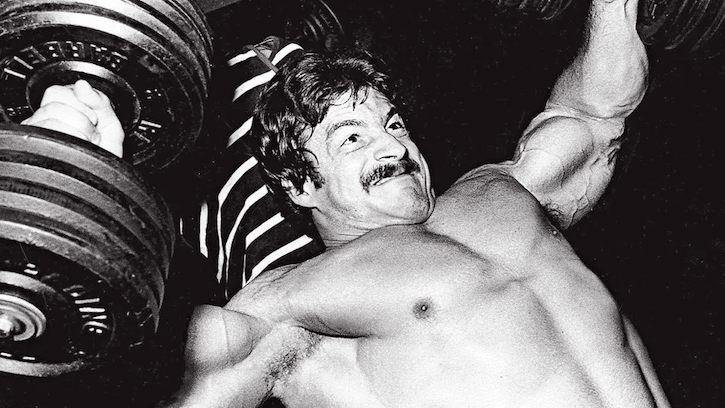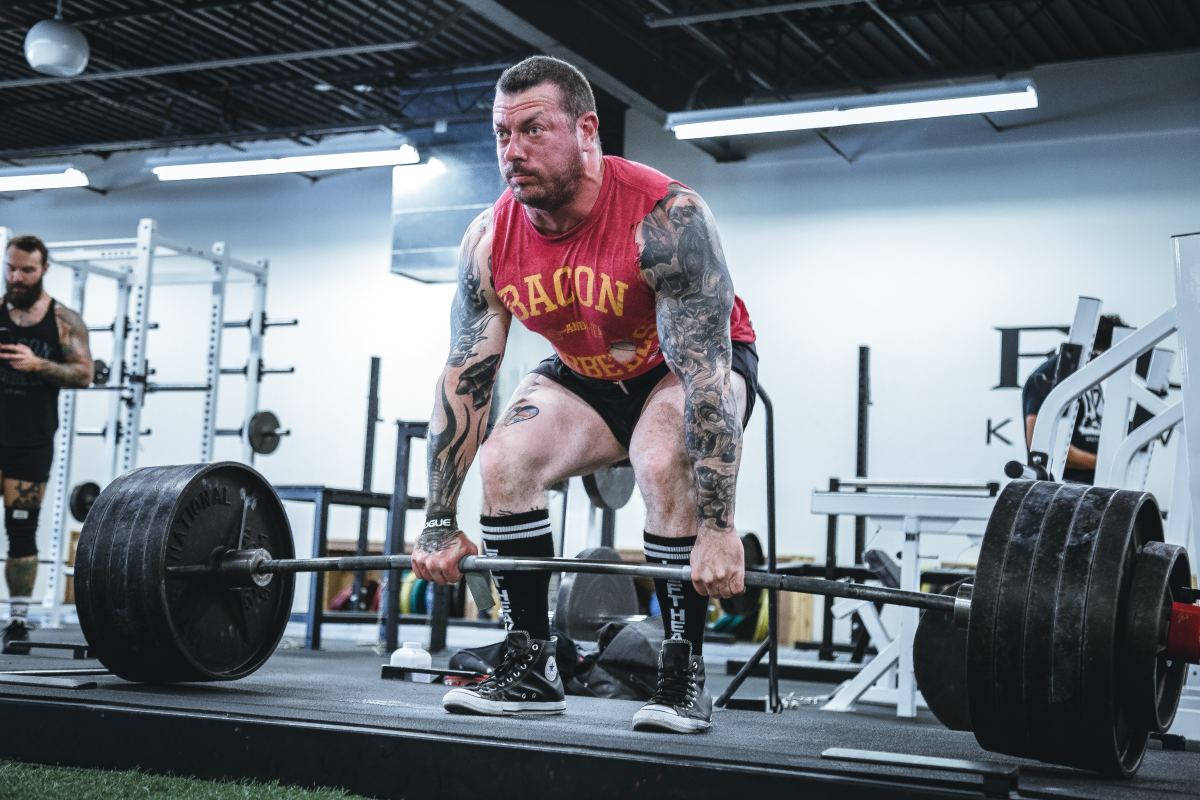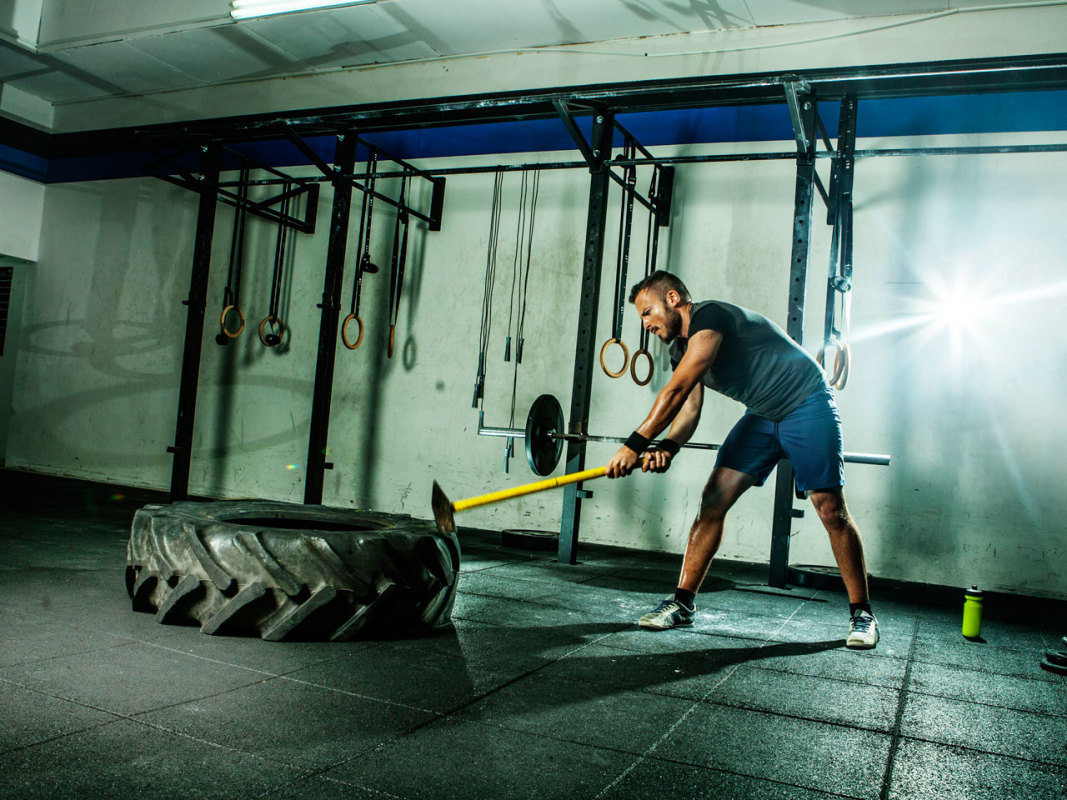Men’s Journal aims to feature only the best products and services. If you buy something via one of our links, we may earn a commission.
When training at home, dumbbells and push-ups can only take you so far. Eventually, you have to improve your home gym setup, and the best place to start is with one of the best pull-up bars. There’s no real equivalent for pull-ups as a strength exercise for building your back, shoulder, and core strength.
Whereas so many pieces of workout equipment can be unwieldy and expensive, pull-up bars are generally very affordable. You can have any size home or apartment and find one that works for the space. All you need to do is figure out which one is the best for you.
What Types of Pull-Up Bars Are There?
Doorway pull-up bars are the fall-back option for small apartments but the best bet for serious training is a freestanding pull-up rack or wall-mounted bar.
- Doorway Pull-Up Bars: These extend the length of a standard door frame. They’re inexpensive and simple if you don’t have space for a wall-mounted setup.
- Wall-Mounted Pull-Up Bars: These bolt into wall studs or a ceiling and are generally the most stable kind of pull-up bars, perfect for your garage or basement gym.
- Freestanding Pull-Up Bars: Freestanding racks and pull-up stations have a stable footprint. They’re ideal for garages or a dedicated home gym space.
Which Type of Pull-Up Bar Is Best?
Determining the best type of pull-up bar depends largely on your space and preference. Opting for more expensive options, like a wall-mounted pull-up bar or a freestanding unit, would give you a well-rounded workout. But in most situations, Men’s Journal recommends a doorway-style pull-up bar.
The doorway pull-up bar is so much more convenient than the other types but delivers the same kind of workout. They’re more affordable, set up (if any) is easier, and you can get them out of the way when you aren’t using them.
Do Pull-Up Bars Damage Doors?
Although door frame pull-up bars might be the best overall option, many are skeptical of their side effects. A common question people have before purchasing one of these is whether or not the pull-up bar will cause damage to their door frame.
In short—yes, potentially. Not all door frames are the same—some are made very well out of hardwood while others are older and weak or made from a wood-style plastic that can’t bear weight. If used improperly or not thoroughly researched, the wrong pull-up bar could compromise the sturdiness of a frame, causing cosmetic or structural damage (or both), or worse, putting you at risk of injury.
Despite that, many pull-up bars for door frames have rubberized ends that gently distribute the weight across the frame, making incidents less likely. It’s always best to measure your door frame before choosing a pull-up bar to make sure the sizes are compatible. It may even be good to test the door frame’s strength ahead of time.
Pull-Up Tips For Beginners
If you’re getting started on a pull-up routine, some accessories can help.
- Workout Gloves will prevent blisters and help your grip.
- Gym Chalk will stop your hands from getting sweaty and keep your grip from slipping.
- Gym Rings are great for beginners building strength but can also be used for dips and more advanced moves.
- A Suspension Trainer, like this one from TRX, can accompany a wall or freestanding pull-up bar. These are like rings but easier to use.
- Pull-Up Assistance Bands assist with pull-ups if you’re struggling to get above the bar.
- A Gym Box helps you reach your pull-up bar if it’s up too high.
The Best Pull-Up Bars of 2023
Perfect Fitness Multi-Gym Doorway Pull-Up Bar and Portable Gym System
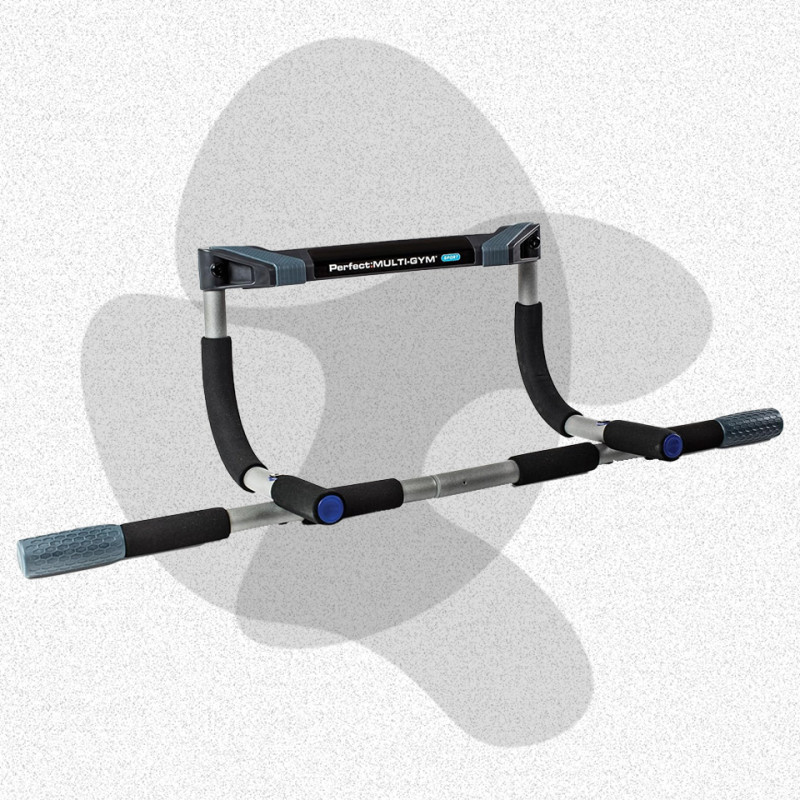
Courtesy of Amazon
Best Pull-Up Bar Overall
This pull-up bar offers a whole gym’s worth of workouts in just one simple device. Used as a pull-up bar, it offers three different grip positions, but you can also throw it on the floor and use it for dips and incline pushups, too. Plus, rubber pads protect your walls, floors, and door trim from scratches while creating a lockdown grip no matter what exercise you’re doing. It fits door frames 27 inches to 35 inches wide.
PROS: Compact and easy to set up and take down for those with limited space.
CONS: Door frame bars may cause damage to a door frame but this one promises not to with rubber pads.
[$35; amazon.com]
Yes4All Multi-Grip Wall-Mounted Pull-Up Bar
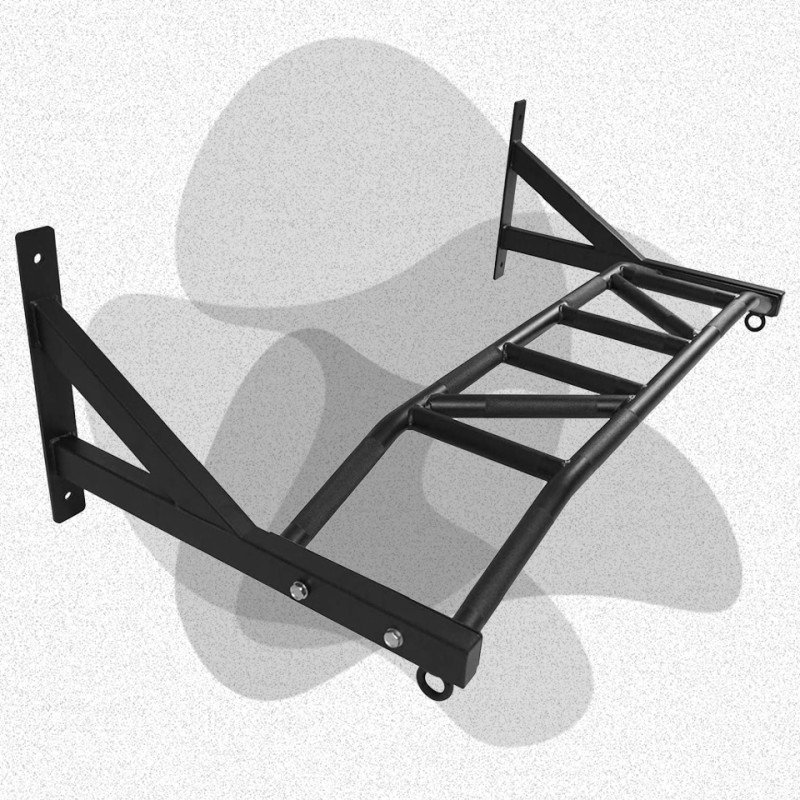
Courtesy of Amazon
Best Pull-Up Bar for Grip Variations
As we’ve already discussed with other items on the list, having multiple grip options is a huge perk. This wall-mounted pull-up bar is the best of the bunch, with 14 different grips (maybe more if you get creative), including both wide and narrow neutral positions (palms facing each other), wide and narrow overhand, and even angled bars for a cross between underhand and neutral that’s easy on the wrists.
PROS: Very sturdy steel construction with tons of gripping options and anti-slip textured grip surfaces.
CONS: Can be a little tricky to install for those who aren’t super handy.
[$109 (was $117); amazon.com]
Sportneer Doorway Pull-Up Bar
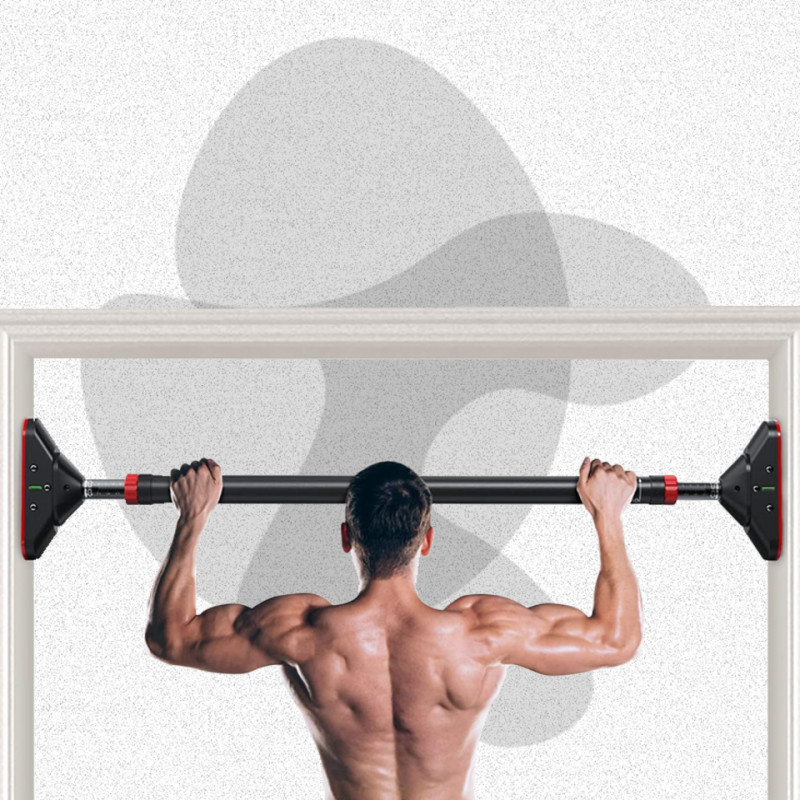
Courtesy of Amazon
Best Compact Pull-Up Bar
Maybe you live in a studio apartment and have absolutely no space for a home gym—no problem. This is the best doorway pull-up bar for those with limited space because it’s non-permanent and requires no screws. Its fixative technology keeps the bar in place, holding up to 440 pounds, and you can easily take it down when your workout is over. The bar itself is foam-coated for a comfortable, flexible grip.
PROS: Installation is relatively easy, with no screws involved and bubble levels on each side to make sure the bar is flat.
CONS: Because it goes below the top of the door, it may be too short for taller individuals.
[$37 (was $50); amazon.com]
Homezillions Power Tower Adjustable Exercise Station
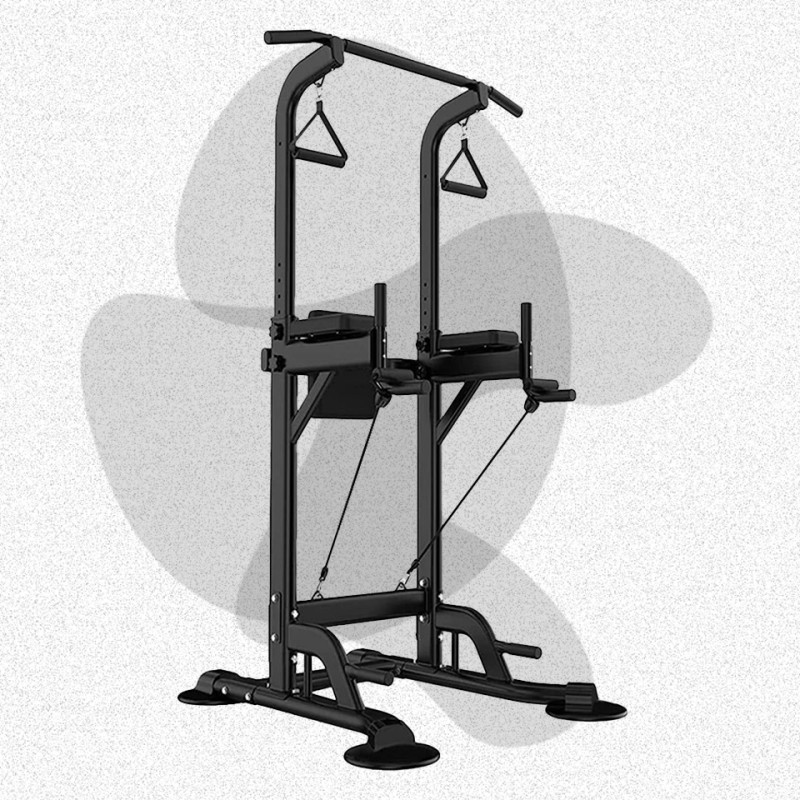
Courtesy of Amazon
Best Multi-Function Pull-Up Tower
Like other power towers, this versatile pull-up bar for home allows you to do dips, push-ups, leg raises, and other bodyweight exercises. But you also have dedicated attachment points, both up high and down low, to use resistance bands and make this a more complete workout station. Our favorite feature is that the pull-up and dip bars are adjustable from 59 to 90 inches, making it suitable for people of all sizes.
PROS: You can do many exercises with it for the entire body, including resistance band moves with the built-in rings. It’s also adjustable to different heights.
CONS: It takes up a bit of room, so it may not work for small spaces.
[$125 (was $139); amazon.com]
OneTwoFit Wall-Mounted Pull-Up Bar
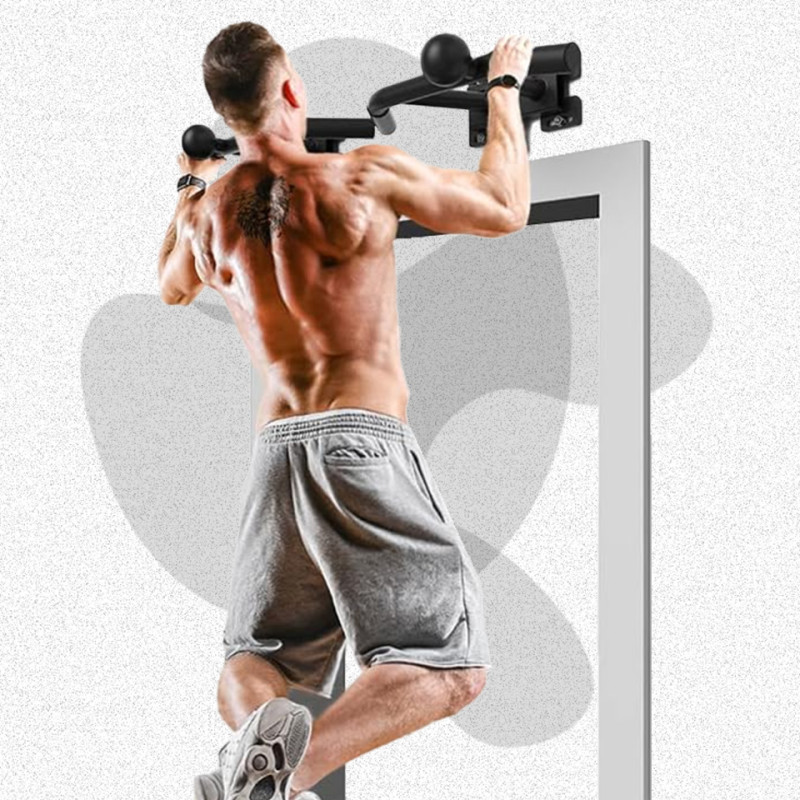
Courtesy of Amazon
Best Pull-Up Bar for Backyard
We love this wall-mounted pull-up bar because it can be installed indoors or outdoors on a solid brick, concrete, or tile wall. Its two-piece design allows you to set the width of the handles according to your body size and preferences. The six grip options are great, too—wide, narrow, angled, and unique ball handles for advanced grip-strengthening work.
PROS: It’s sturdy, has a bunch of grip options, and can be used to create an indoor or outdoor workout space.
CONS: It doesn’t work for hollow/honeycomb brick walls or other non-stable structures like drywall or plaster, so the number of places you can put it is limited.
[$55; amazon.com]
OneTwoFit Wall-Mounted Pull-up Bar
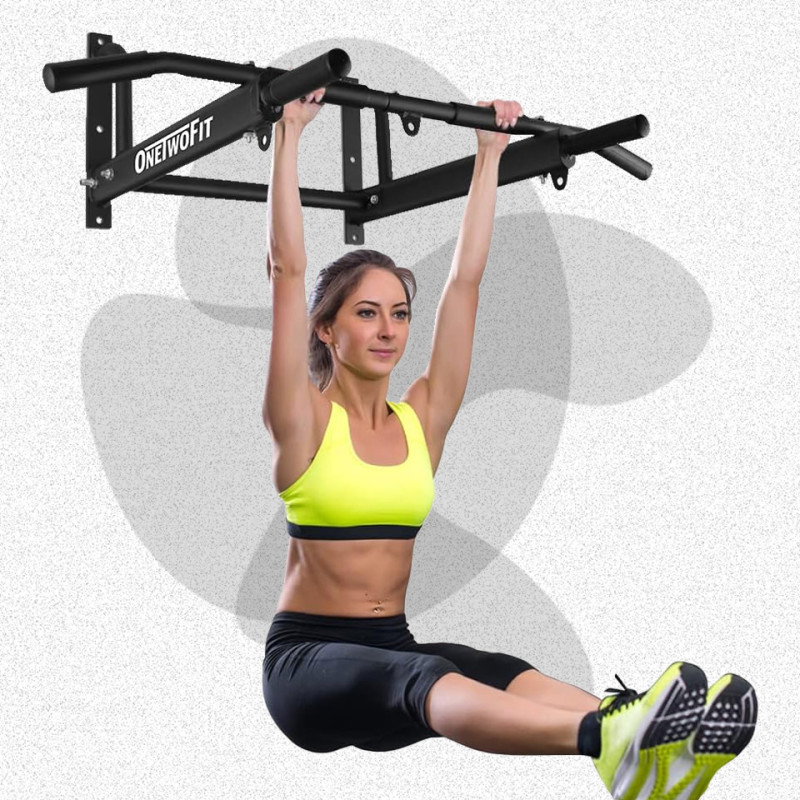
Courtesy of Amazon
Best Wall Mounted Pull-Up Bar
For a full-body workout, this option from OneTwoFit is hard to beat. It’s made of heavy-duty steel, can support up to 440 pounds, and has an extra stable 6-hole design. The best thing about it is that it has three grip types—wide, medium, and narrow—making it perfect for doing a range of exercises and strength progressions.
PROS: Very sturdy when hooked up and allows for many different grips and workouts for the best upper body workout at home.
CONS: You’ll need a dedicated space with a strong wall and some basic DIY skills to set this up in a garage, or home gym.
[$64; amazon.com]
Ultimate Body Press Ceiling Mount Pull-Up Bar
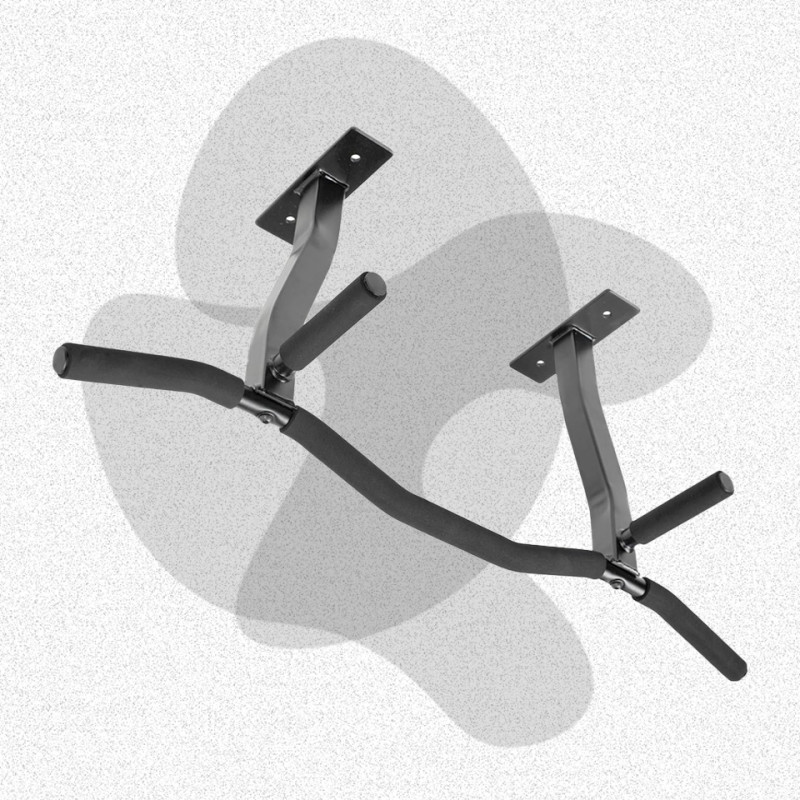
Courtesy of Amazon
Best Ceiling-Mounted Pull-Up Bar
If you don’t have the wall or door space for a pull-up bar, this ceiling-mounted option is the way to go. Its four ergonomic grip positions and high-density foam make it extra comfortable to use, and the reversible risers can be mounted below either 16-inch or 24-inch ceiling joists for added installation flexibility.
PROS: A great alternative mounting-style pull-up bar when there’s no wall space.
CONS: Slightly harder installation; doesn’t have as much grip variety as other bars
[$72 (was $90); amazon.com]
CAP Barbell Power Rack Exercise Stand
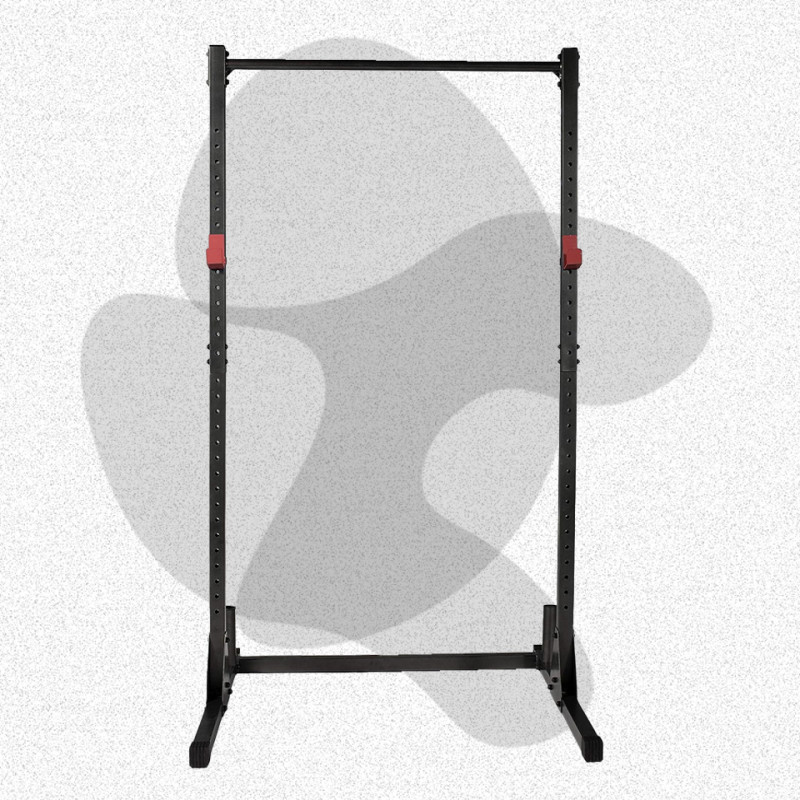
Courtesy of Amazon
Best Freestanding Pull-Up Bar
This rugged freestanding pull-up bar (and squat rack) is designed to meet military specifications for the Army Combat Fitness Test, so you know it’s ready for your home workout. It comes with an adjustable bar and a detachable step, and the 46 inches of space between the supports creates plenty of room for all kinds of exercises (including the “Leg Tuck” event in the Army’s fitness test). The fact that this is also a squat rack makes it a perfect piece of equipment for a mini home gym—just add a good-quality barbell.
PROS: Strong and durable, works indoors or out, and doubles as a squat rack.
CONS: A big piece of kit so not ideal for small apartments.
[$116; amazon.com]
ProsourceFit Chin-Up Bar
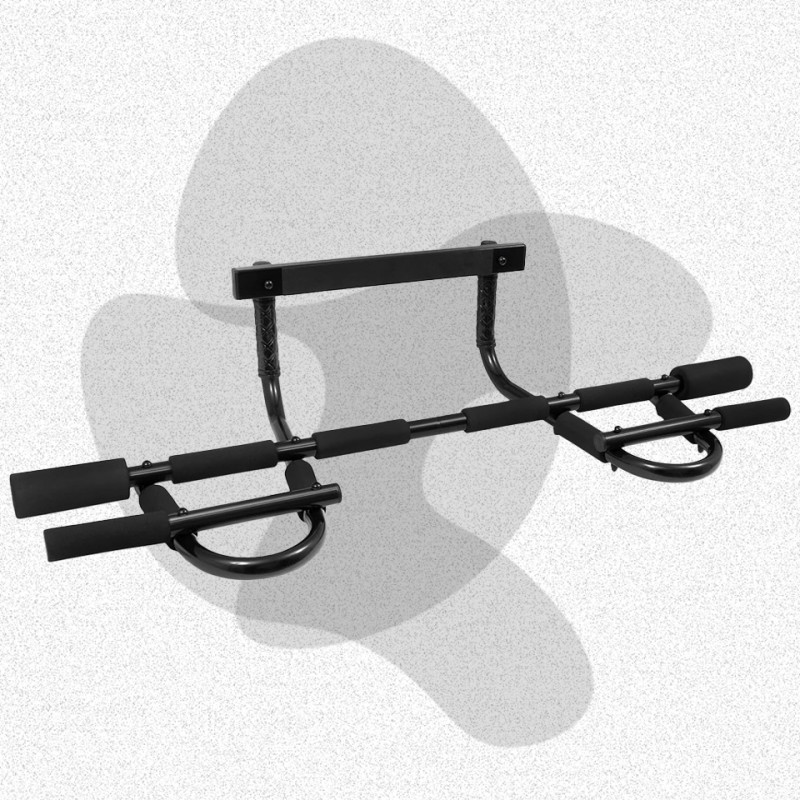
Courtesy of Amazon
Most Versatile Door Frame Pull-UpBar
This door frame pull-up bar offers multiple grip positions—ranging from close grip to hammer grip—that targets your biceps from multiple angles. It takes just seconds to set up, so you can work up a quick pump any time.
PROS: It’s an affordable option that can go in any doorway with a ton of different grip options for a more well-rounded workout.
CONS: Doorframe bars can’t be height-adjusted
[$35; amazon.com]
Intent Sports Pull-up Assist Band System
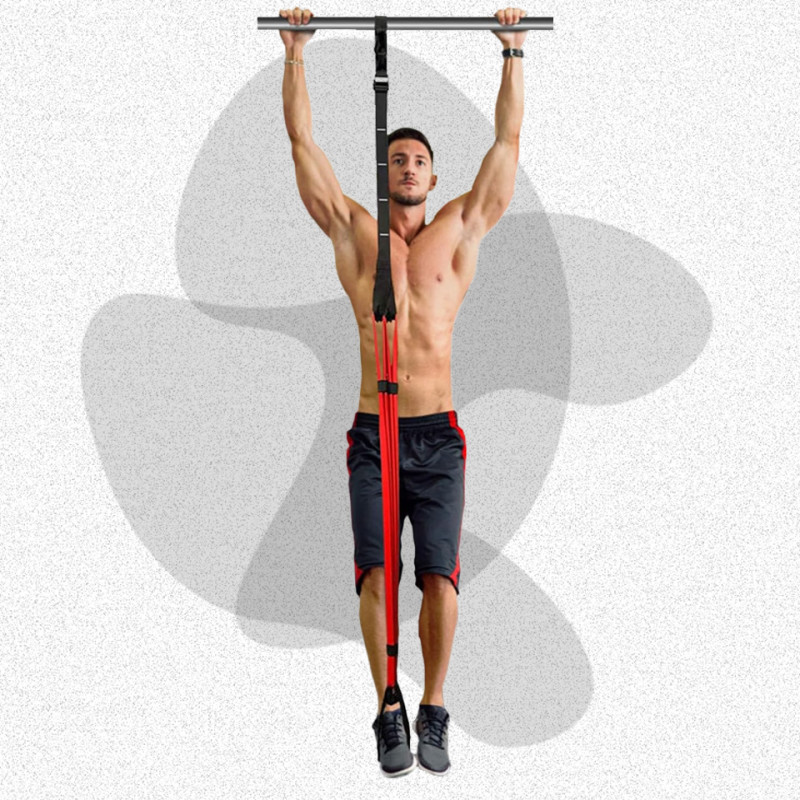
Courtesy of Amazon
Best Pull-Up Bar for Beginners
If you need a little boost to get above the bar, this system from Intent Sports delivers. Attach it to any pull-up bar and put your feet through the loop at the bottom to offset your body weight while doing pull-ups. You can adjust the boost (up to 130 pounds) simply by changing the length. It’s a great option to build muscle and confidence as you work up to unassisted pull-up exercises.
PROS: You can limit the weight you put on yourself with these bands to let you move up in weight gradually while you get used to the new routine.
CONS: Pretty useless once you move past the need for them.
[$35; amazon.com]
Iron Gym Total Upper Body Workout Bar
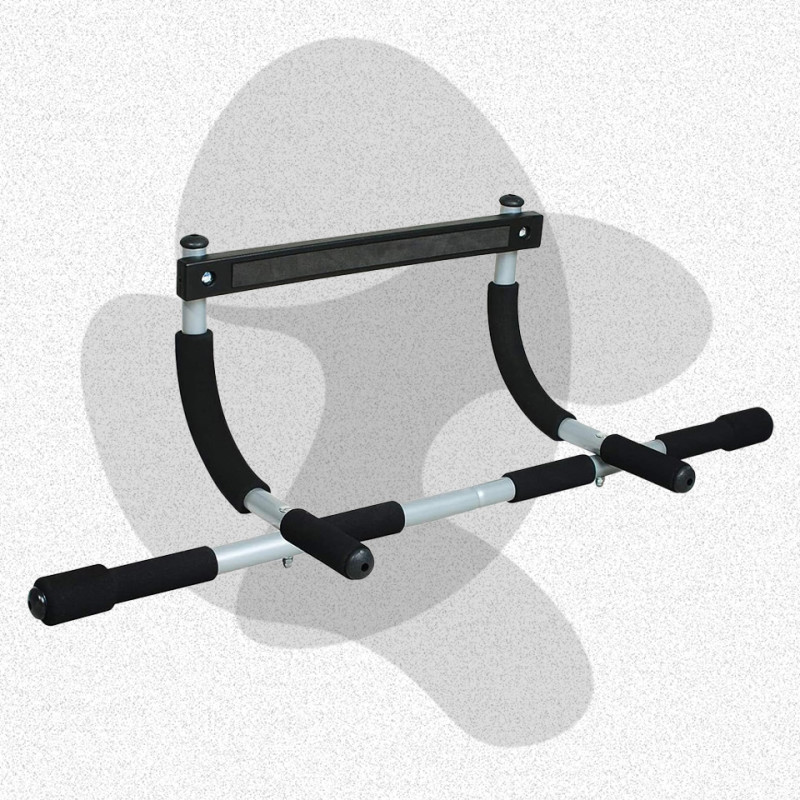
Courtesy of Amazon
Best Pull-Up Bar for a Small Apartment
A simple setup that’ll leave some extra cash in your pocket, this bar from Iron Gym does everything you need. It offers three foam grip positions, doesn’t require extra hardware or permanent installation, and can even be used on the ground for wide-grip pushups. When you’re done using it, you can store it behind your couch, wedge it under the bed, or pop it in the closet. Save space without sacrificing results.
PROS: It’s very minimal and doesn’t sacrifice other workout positions; easy to store.
CONS: Not many bells and whistles that some other options have.
[$30; amazon.com]
Weider Power Tower
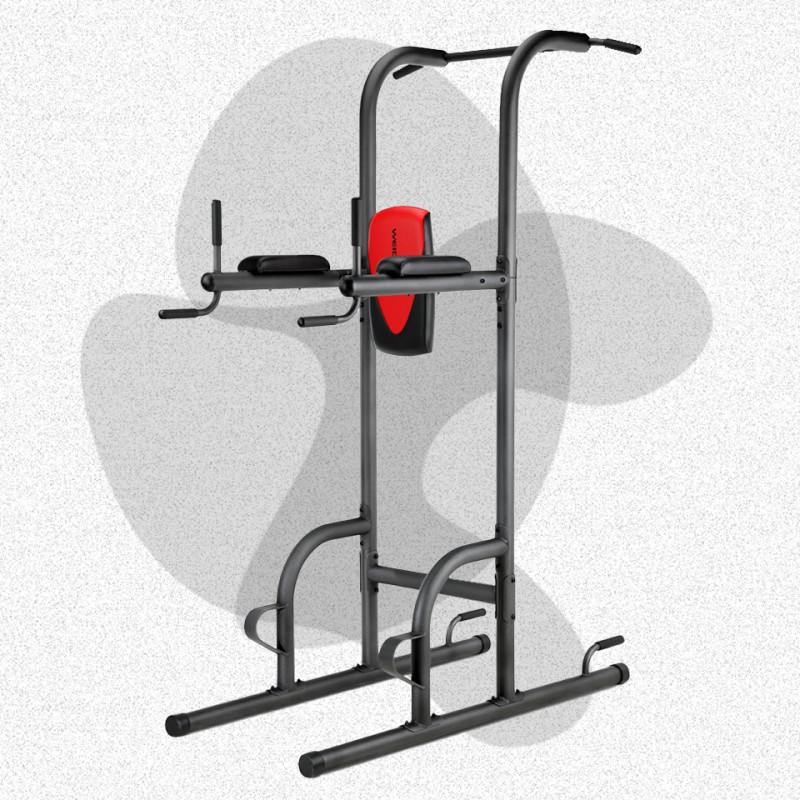
Courtesy of Amazon
Best Power Tower
If you have space, a power tower is like a complete mini gym with pull-up, dip, push-up, and leg raise stations all built in. Plus, with this piece from Weider, you get a 30-day trial of the iFIT workout app. The pull-up bar on this power tower has both wide and narrow grips and can hold up to 300 pounds. The dimensions of the constructed tower are 53 by 43 by 86 inches.
PROS: You can go beyond pull-ups and train your chest and core with dips, elevated push-ups, and leg raises.
CONS: Like the freestanding option, these are not suited for small apartments.
[$173; amazon.com]
Duonamic Eleviia Portable Pull-up Bar
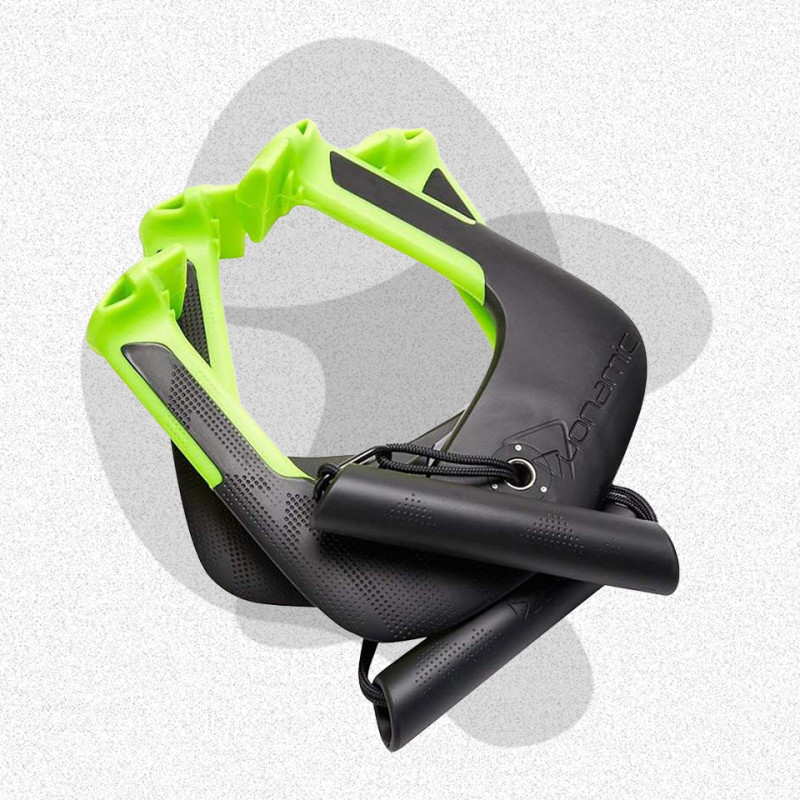
Courtesy of Amazon
Most Unique Pull-Up Bar
Although this might not look like a traditional pull-up bar, it solves the same problem. The bonus here is that you can take it anywhere because it’s so compact, including different locations in your home or even on the road while traveling. Simply clamp the hooks on a door frame to get the workout going. The handles may take some getting used to, but once you get the hang of it, you’ll be giving your upper body quite the workout.
PROS: These negate any kind of limitation on space or positioning.
CONS: They might take some getting used to using and trusting.
[$99 (was $129); amazon.com]
































